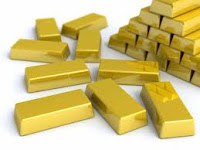 |
| All that glitters... |
This truism could very well apply to dominant gold producer Philex Mining Corporation (PSE: PX) which suffered a string of difficulties lately.
When businessman Manuel V Pangilinan (or MVP as he is well known) and his group took over control of Philex a few years back, hopes were high that the move could very well inject some life into our moribund mining--in particular, gold mining--industry. He pulled it off by acquiring a large block of shares from the pension fund Social Security System (SSS) and other owners.
The takeover even elicited controversy (for the seller, not MVP) when MVP, to seal control of the company, bought a large chunk of shares from controversial businessman Roberto V Ongpin, at a huge premium. Only a few weeks earlier, Ongpin bought the block from another government pension fund Government Service Insurance System (GSIS) for about P12.50 a share only to flip it shortly to MVP at something like P 19.20/share. The issues include: why the GSIS sold the block cheaply; how Ongpin could have known that another group was interested in the block; and even the manner of financing the transaction when he borrowed from a government institution.
But the manner is not our concern here. Suffice it to say that by paying a huge premium to prevailing market price, MVP put much faith in the company as a business proposition, and by inference, the gold mining industry. It doesn't hurt if the gold price was also zooming its way to all-time high achieved at $1,700 an ounce.
Investors were cheering when the stock price of PX climbed to mid 20s. At these levels, the price seemed expensive. Even MVP's acquisition price seemed expensive, but then, he is taking a longer view.
When the euphoria subsided and the stock price slid down to below P 19/share, I took a board lot position. It was still expensive, and I should have followed my instinct, but my faith in MVP and on resources in general, prevailed. My thinking then was to add more when prices still soften--which I did.
All seemed well--when a sort of a black swan struck. A black swan event as introduced into finance, is a completely unpredictable event that causes catastrophic consequences. The September 11 World Trade twin tower attacks is the oft-quoted example.
When the mine tailings pond of PX's Padcal mine gave way at the height of an unusual volume of rain, the mine's gold operation was abruptly stopped. That was hardly a black swan by definition, but the consequences for the company was catastrophic.
The mine was ordered to stop operations and pay a hefty fine of at least P 1 billion, despite a force majeure argument by the company.
While this was happening, the stock price was seesawing with a downward bias, depending on the rumor at hand: how big was the damage? How large is the environmental impact? How much will the fine be? When will the mine resume operations?
The fluctuations in price represent huge potential gains--but also huge losses. It is not for the faint-hearted, however.
When it became clear that the mine will not be allowed to operate for at least a year and PX agreed to pay the P 1 billion fine, I realized losses. MVP agreed to pay, not out of admission to guilt, but he just wants to move on, and hopefully gain a favorable ruling on early resumption of operations. But the company has already suffered material change in its economics.
Taking losses is unpalatable to most investors, but that is a hard reality that should be accepted as-a-matter-of-fact by any investor, big or small. One should face losses some time, but try to minimize them. What matters most is that gains should more than offset the losses for one to be successful.
At present, PX is allowed to resume operations for a limited time.
But the Philex story doesn't end there.
Lately world gold prices have cratered from around $1,600/oz to just below $1,400. The jury is still out where the price is heading, but the bears are predicting the worst. The least efficient production cost including ancillary services is estimated to be around $800/oz according to Seth Masters of Bernstein Global Wealth Management. Those high-cost producers would be squeezed hard.
PX which has one operational mine prior to its suspension, has its back against the wall. Its main product is highly dependent on world prices. Yes, it has some copper production, but it is a by-product of the main gold production. And copper prices have also tanked.
PX may have lost its luster; it may not be knocked out in the long term. But it is mortally wounded. It would be a very long time before it can climb back to its pedestal in the local mining industry. The current stock price may look attractive; but that could be just fool's gold.
At the moment, I wouldn't touch it with a ten-foot pole yet. Not yet.



